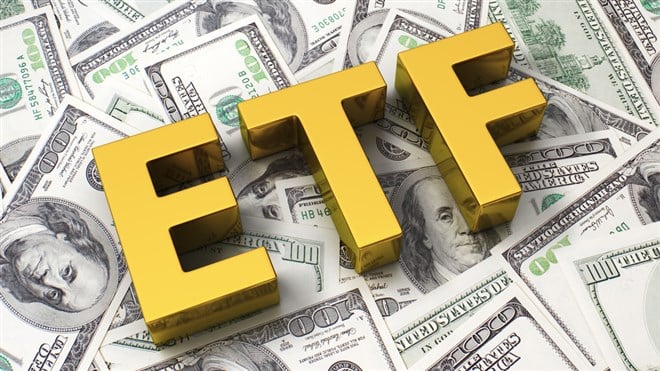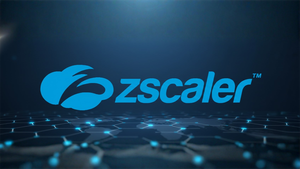
As big-tech layoffs pile up, betting against the sector is becoming more popular, as evidenced by flows of $913.74 million into the ProShares UltraPro Short QQQ (NASDAQ: SQQ) so far this month.
This exchange-traded fund seeks daily investment results before fees and expenses, corresponding to three times the inverse of the daily performance of the Nasdaq 100 Index. That index is tracked by the widely held Invesco QQQ Trust (NASDAQ: QQQ), whose largest components include Apple Inc. (NASDAQ: AAPL), Microsoft Corporation (NASDAQ: MSFT), Amazon.com Inc (NASDAQ: AMZN), NASDAQ: GOOGL">Alphabet Inc (NASDAQ: GOOGL), NASDAQ: NVDA">NVIDIA Corporation (NASDAQ: NVDA), Tesla Inc. (NASDAQ: TSLA) and Meta Platforms Inc (NASDAQ: META).
Of those companies, Microsoft, Amazon, Google, and Meta laid off workers in recent months and weeks. Tesla laid off employees in June and is rumored to be slashing more jobs this quarter.
Although the QQQ ETF also has significant holdings in other sectors, including communications services, consumer discretionary, consumer staples, and healthcare, tech dominates. That sector was trounced over the past year, with the Technology Select Sector SPDR Fund (NYSEARCA: XLK) posting a one-year decline of 12.96%.
Recent rallies improve that performance in tech. The XLK ETF has gained 8.35% in the past three months and 7.95% in January.
Last year, the ETF posted a 27.73% decline.
Do Layoffs Mean Tech Is Doomed In 2023?
So if tech is back in rally mode (partially driven by the layoffs, which result in cost cuts, which can improve the bottom line), why are investors and traders flocking into an ETF that shorts the tech-laden Nasdaq 100 index?
It may be partly an incorrect perception that layoffs, especially at a time of high inflation and seemingly non-stop media chatter about a recession, mean big tech will fall hard again in 2023, and investors want to get ahead of that decline.
But investing in an inverse ETF, especially one that seeks three times the inverse of its benchmark index, is a riskier proposition than it may seem.
Even fund sponsor ProShares, in its summary prospectus, cautions: “The Fund presents different risks than other types of funds. The Fund uses leverage and is riskier than similarly benchmarked funds that do not use leverage.
The Fund may not be suitable for all investors and should be used only by knowledgeable investors who understand the consequences of seeking daily inverse leveraged (-3x) investment results of the Index, including the impact of compounding on Fund performance.”
Like many warnings, that one likely goes unheeded.
ProShares is saying that the SQQQ ETF is a vehicle for timing the market. Your timing has to be on point to profit from anything designed as a trade. Just because the broader Nasdaq is turning south, the SQQQ is not guaranteed to rise.
Daily Rebalancing May Result In Performance Drift
Because a leveraged instrument like SQQQ uses derivatives to achieve its objective, there will be some beta slippage, the term for multi-day tracking inefficiencies. Here’s what that means: Leveraged funds must rebalance at intervals determined by the fund objective. As a daily leveraged fun, SQQQ rebalances its holdings after each market close to keep aligned with its benchmark. While that part makes sense, it also causes drift from the underlying index, which doesn’t rebalance as regularly.
That means a daily loss or gain may not be what the fund buyer thinks it should be relative to the Nasdaq 100’s performance.
Investors must also be prepared for wider spreads on the SQQQ or any other leveraged 3X ETF. For example, as you can see on their charts, on January 23 the spread between the daily high and low price of the QQQ was almost 2.6%; on the SQQQ it was almost 7.9%. That’s the “three times the inverse of daily performance” objective at work.
Unlike a widely used benchmark index, such as the Nasdaq 100, long-term performance for SQQQ or any inverse index, is irrelevant. The underlying index performance gives you a gauge of how particular asset classes are faring. The performance of its inverse tells you how the bundle of derivatives, designed to provide the inverse of a benchmark, has performed.
The upshot is: Be cautious when investing in SQQQ or any 3X leveraged ETF. Understand that it’s specifically designed to be a short-term trading instrument. It’s not meant to buy and hold, and you must be prepared to monitor its performance daily and also have some luck (not skill) with guessing where the market will be headed in every session.





